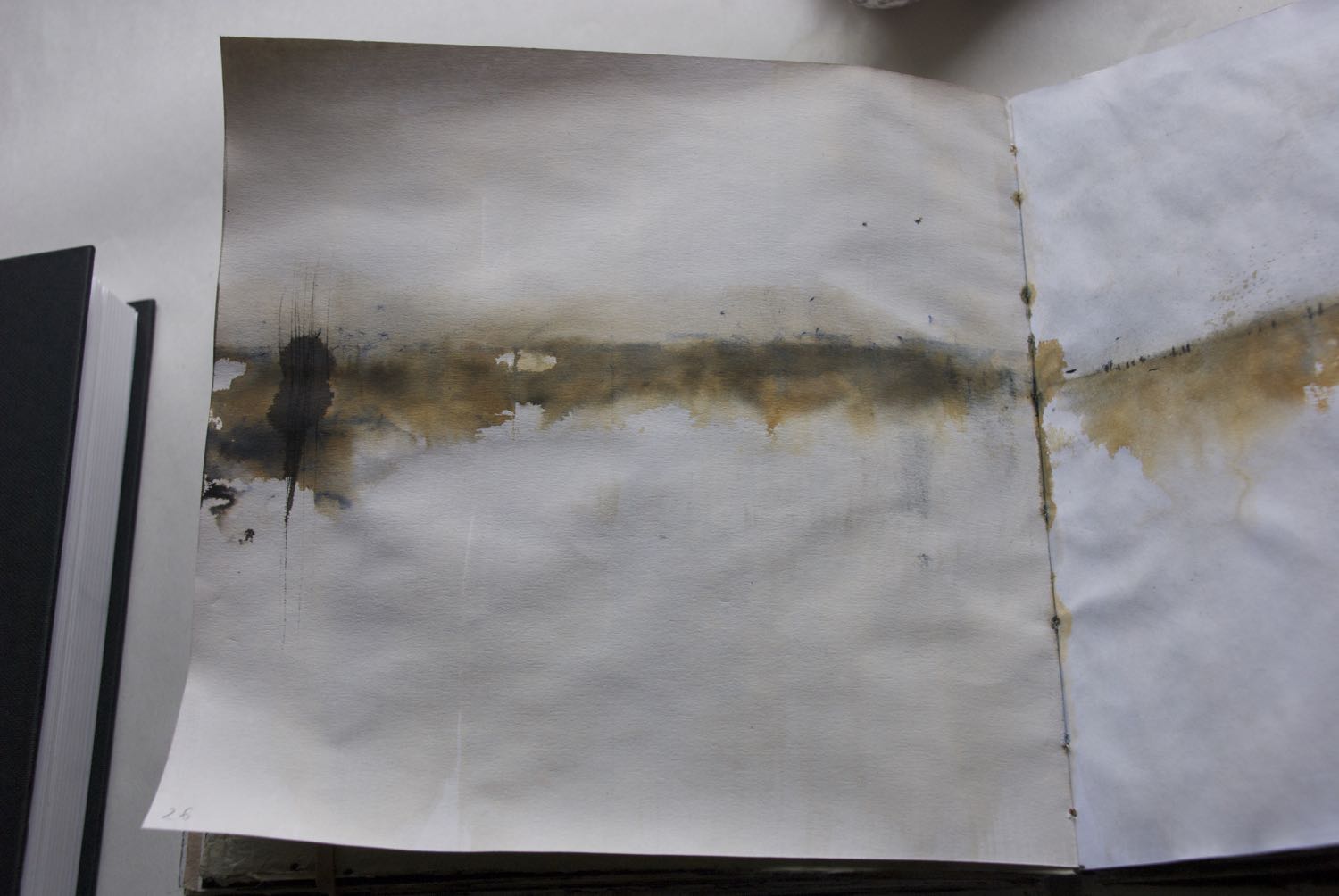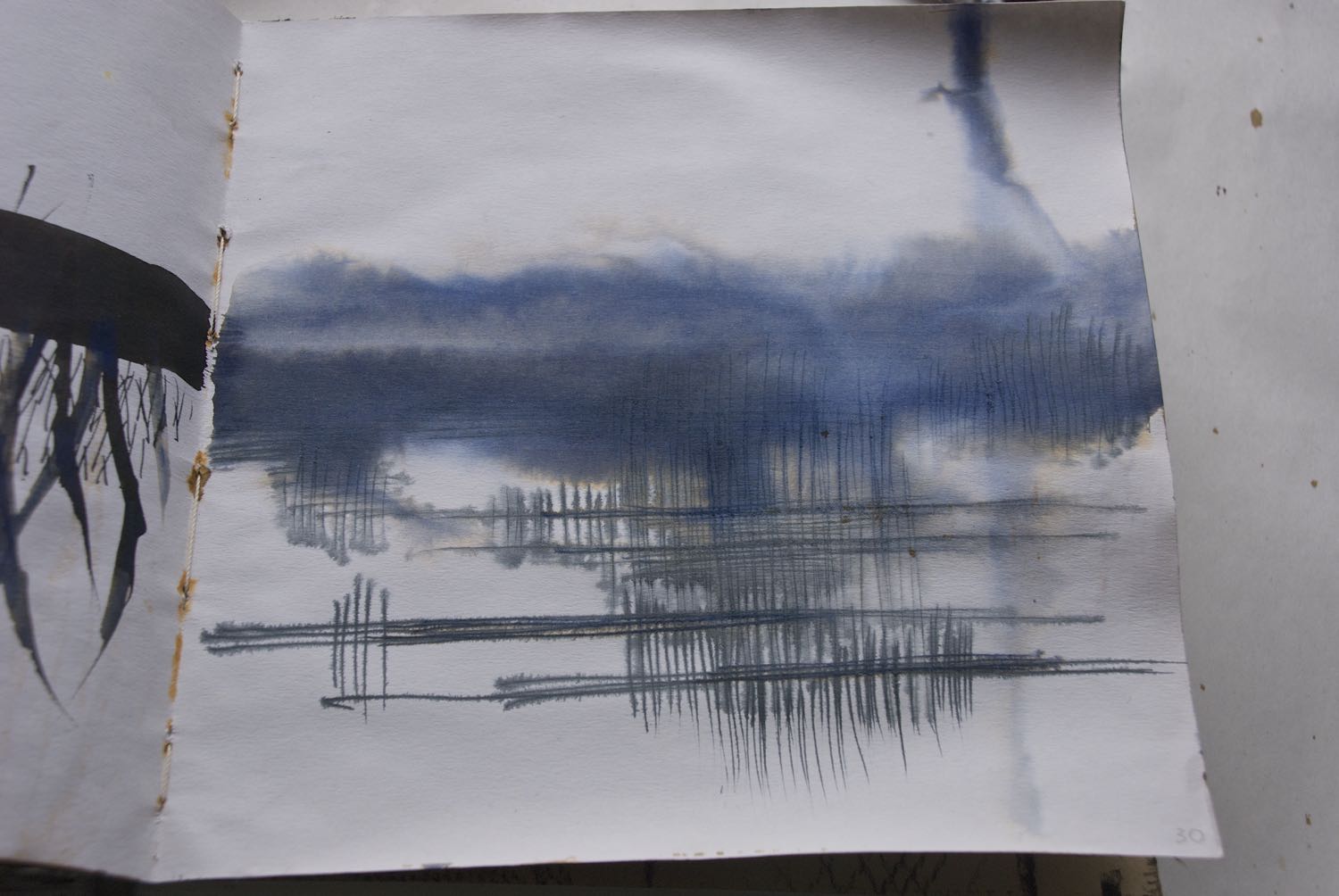Last weekend I set aside some time for drawing. None of these drawings are for their own sake but a way of testing ideas and I had some specific things I wanted to try. The results were mixed and I have some conflicted feelings about them.
First I did a series of ink drawings where the focus was on exploring layers of ink wash. I had not planned that they would turn into a series of “mountain-scapes” but they did. The first was simply an intuitive response to what I was doing at that moment, but then with the next few it became progressively more deliberate … and I became progressively more dissatisfied. I’ve been pondering the reasons for this dissatisfaction.
What I don’t like is that the drawings became more explicit, more literal as I went on – too much so for my taste. They are unequivocally mountain-scapes, leaving no room for alternative interpretation. Yes, they are atmospheric and “pretty” … but in a way I find rather predictable – even trite. They encourage a superficial response. The ones I like best are the simplest and also the more ambiguous.
Simpler, better
Piling up drawings - some of the accidental combinations were far more interesting than the individual drawings
It’s as though I had followed a path that, while perfectly pleasant, was not leading me somewhere that I wanted to go. Although I sort of recognised this at the time, it was hard to change direction rather than continue to follow the track I was on. Once my initial crossness with the drawings had passed, over the ensuing days I started to think of ways I could take the method I had been using and push it in a different direction.
The second set of drawings was something I’ve had in mind for a while. They are based on photographs of recently cut hedgerows and inspired in part by Brice Marden’s Shell Drawings. I was interested in developing the calligraphic qualities of the twig shapes.
Hedge drawings - charcoal
Hedge drawings - Indian ink, ink wash, charcoal
Curiously I didn’t enjoy the process of making these drawings that much, although I forced myself to do enough of them to expose a reasonable range of options. I do like the results better. The challenge here is how to develop them further. Initially it felt like a dead end – how on earth could I use these? Their monochrome character, which is part of their appeal, is problematic with dye. But gradually I have been identifying some ways forward.
If I had written this post last weekend it would have been a stream of irritation. It’s lovely when I do something and it just works, but there are lots of times when they don’t. Sometimes I need to allow some time to pass before I can see where to go next. And sometimes I have to recognise when I’m going the wrong way and need to retrace my steps.





















































